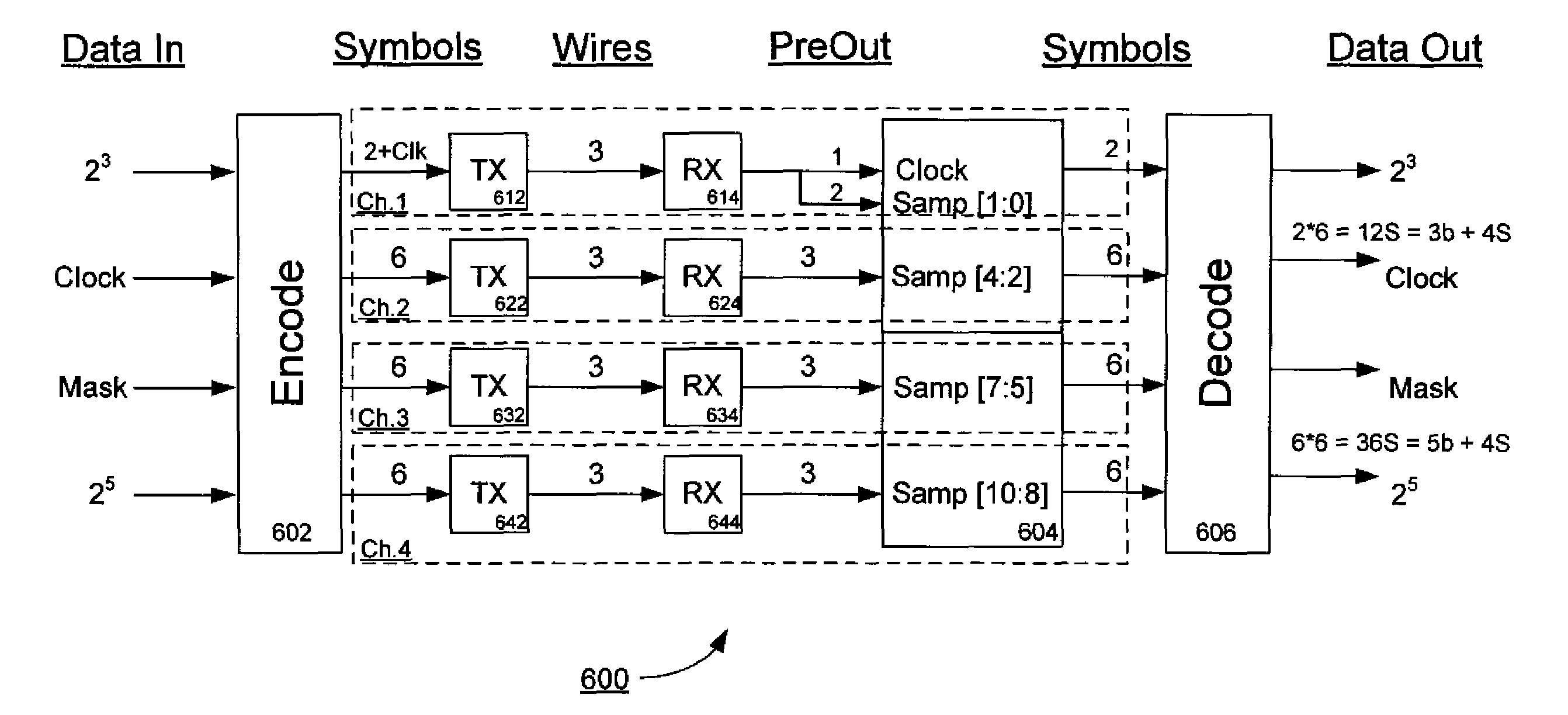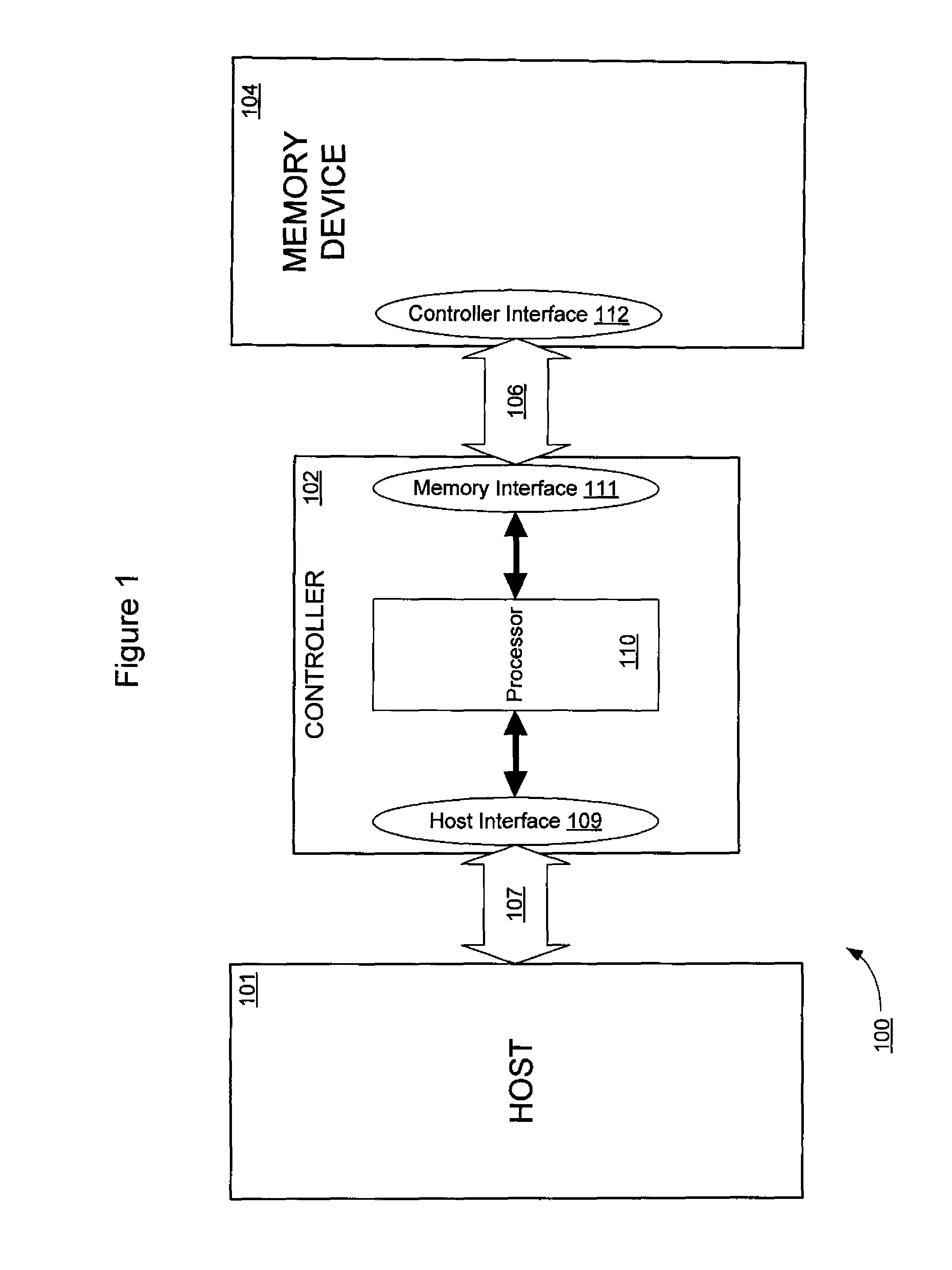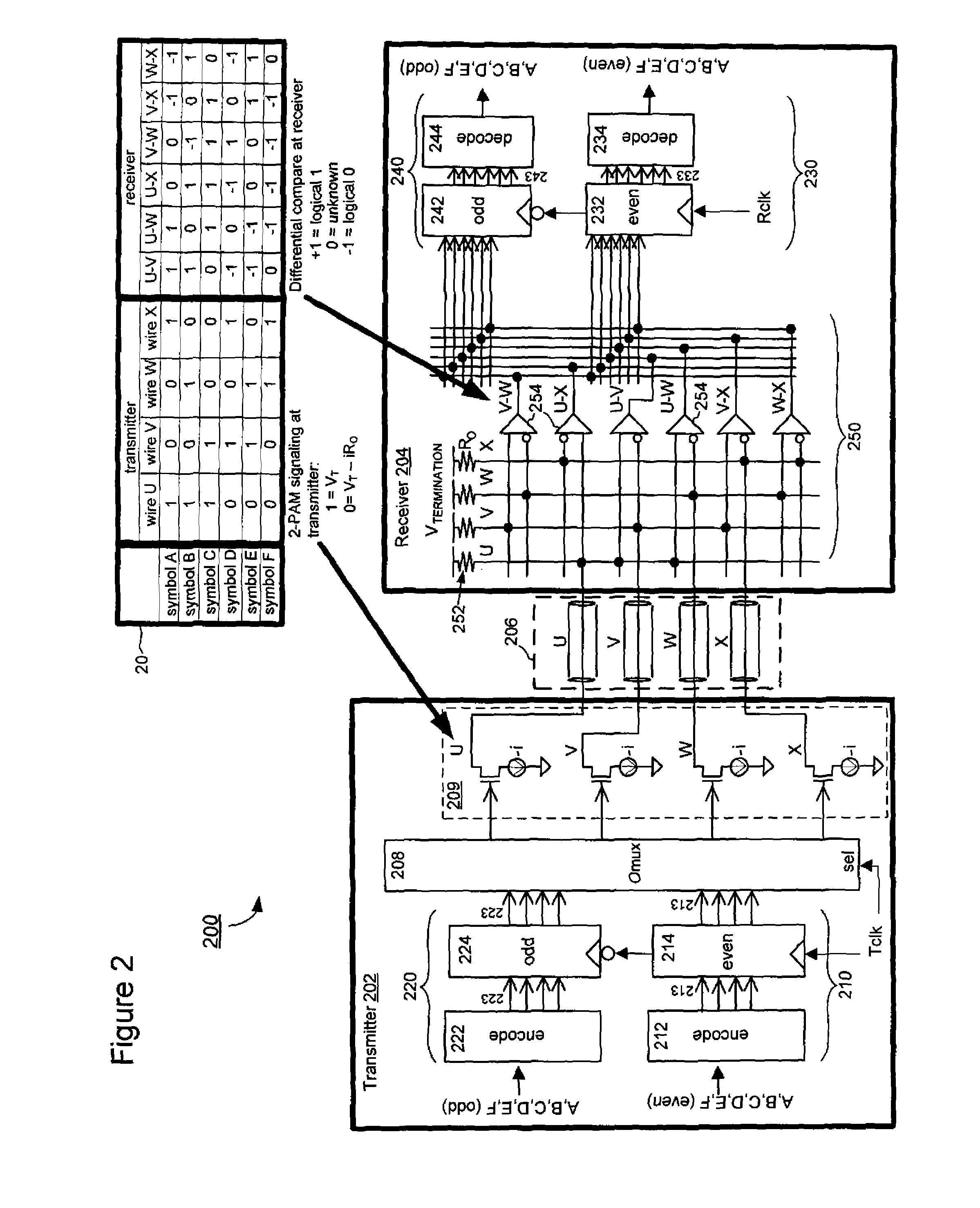Techniques for multi-wire encoding with an embedded clock
a multi-wire encoding and clock technology, applied in pulse conversion, pulse technique, instruments, etc., can solve the problems of limiting the use of high-performance applications, requiring extra wires and related circuitry, and additional requirements tend to increase the complexity of laying out strobe-based memory controllers and memory devices on circuit boards
- Summary
- Abstract
- Description
- Claims
- Application Information
AI Technical Summary
Benefits of technology
Problems solved by technology
Method used
Image
Examples
Embodiment Construction
[0021]Embodiments of the present disclosure provide improved timing control techniques for data communications among electronic components. A transmitter component may encode a set of symbols according to a multi-wire encoding scheme and, with the timing control of a transmit clock, transmit the encoded symbols to a receiver component over a set of wires. The transmitter may also restrict the transmission of a first subset of the encoded symbols to a first portion of a clock cycle associated with the transmit clock and restrict the transmission of a second subset of the encoded symbols to a second portion of the clock cycle. As a result of theses restrictions, a clock signal may become embedded in the multi-wire encoded transmission. The embedded clock signal may be recovered by the receiver component and serve as a receive clock for the reception and decoding of the encoded symbols.
[0022]While most of the description that follows will focus on communications between a memory contro...
PUM
 Login to View More
Login to View More Abstract
Description
Claims
Application Information
 Login to View More
Login to View More - R&D
- Intellectual Property
- Life Sciences
- Materials
- Tech Scout
- Unparalleled Data Quality
- Higher Quality Content
- 60% Fewer Hallucinations
Browse by: Latest US Patents, China's latest patents, Technical Efficacy Thesaurus, Application Domain, Technology Topic, Popular Technical Reports.
© 2025 PatSnap. All rights reserved.Legal|Privacy policy|Modern Slavery Act Transparency Statement|Sitemap|About US| Contact US: help@patsnap.com



